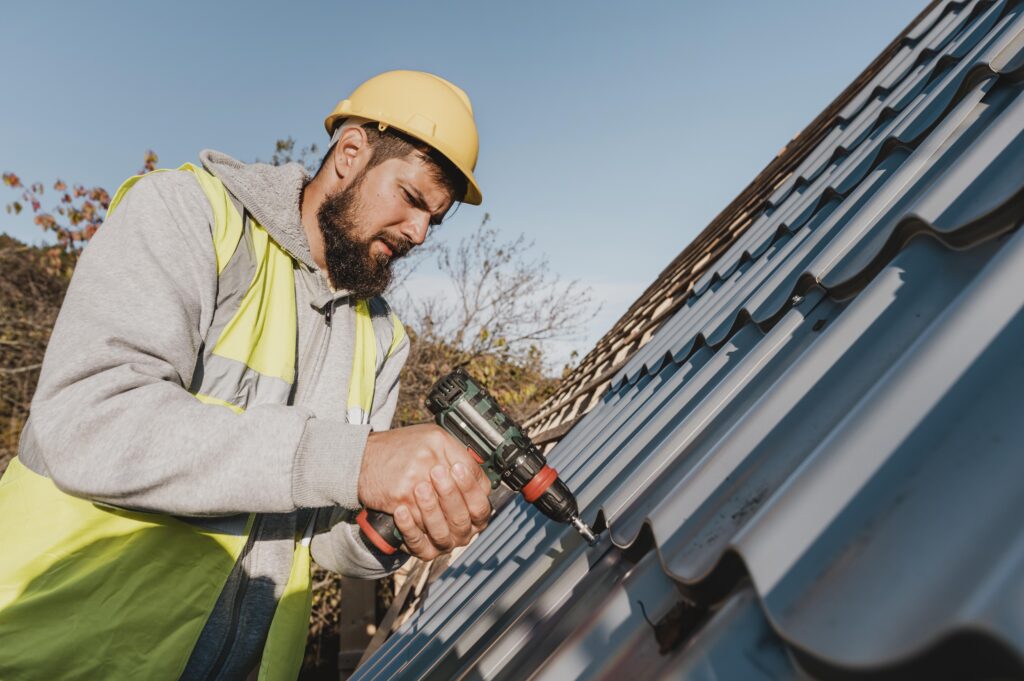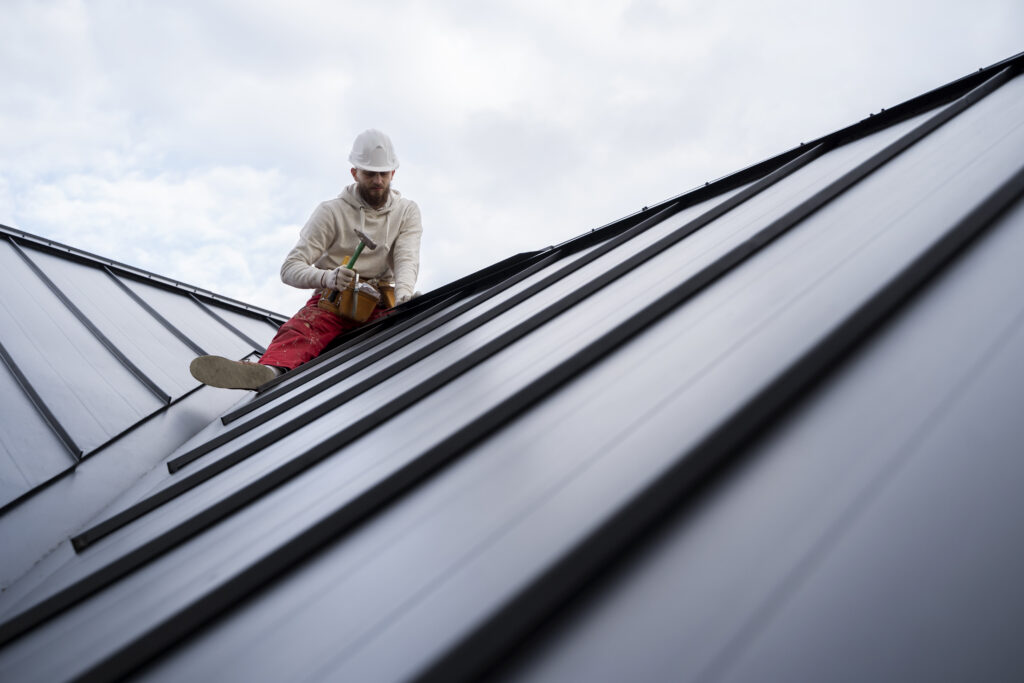A home’s roof is more than just an aesthetic feature; it’s the primary protector of your most valuable asset. The integrity of your roof keeps your family dry, your structure sound, and your energy bills manageable. However, most homeowners only think about their roof when a problem arises, often during a storm or after noticing a leak.
This comprehensive guide breaks down everything you need to know about roofing, using insights derived from the most critical questions homeowners ask—from material choices to repair costs. We’ll help you spot the early warnings, understand your options, and make informed decisions about your home’s shield.
Signs You Need a New Roof or Immediate Repair
Knowing when to call a professional can save you thousands in water damage and structural repairs. It’s crucial to perform regular visual checks, especially after severe weather.
- Missing or Cracked Shingles: Look for granules in your gutters or bare spots on the roof. Cracked, curled, or buckling shingles are a major indicator of old age or storm damage.
- A Sagging Roof Deck: This is a serious sign that indicates potential structural damage from trapped moisture or insufficient support.
- Excessive Granule Loss: Shingle granules protect the asphalt layer from the sun’s UV rays. If you see large amounts of grit in your gutters, the shingles are losing their protective layer and are near the end of their lifespan.
- Water Stains or Leaks Inside: The most obvious sign—stains on your ceilings or walls, particularly in the attic or around vents and chimneys, means you have a roof leak that needs immediate attention.
- Moss and Algae Growth: While mostly aesthetic, excessive moss or algae can trap moisture, causing the underlying structure to rot.
Comparing the Best Roofing Materials for Your Home
Choosing the right material involves balancing cost, durability, and the overall look you want for your home. The most popular options include asphalt shingles, metal roofing, and tile.
The Durability of Asphalt Shingles
Asphalt shingles are the most common and affordable roofing material in North America. They offer a good balance of cost-efficiency and lifespan, typically lasting between 15 and 30 years. They come in various colors and styles, making them versatile for almost any home. However, they are more susceptible to wind, hail, and extreme heat than other materials.
The Long-Term Value of Metal Roofing
Metal roofing has surged in popularity due to its exceptional lifespan (up to 70 years) and resistance to fire, rot, and insects. While the initial installation cost is higher, a metal roof can save money in the long run through energy efficiency (reflecting solar heat) and minimal roof maintenance.
Other Popular Roofing Options
- Tile Roofing (Clay/Concrete): Highly durable, fire-resistant, and aesthetically pleasing, particularly in warm climates. They are heavy and require a strong roof structure.
- Flat Roofing Materials (TPO/EPDM): Used for low-slope or flat roof applications, these synthetic rubber or thermoplastic membranes are excellent for waterproofing and resistance to temperature changes.
How to Find a Reliable Roofing Contractor
The quality of the roof installation is just as important as the materials themselves. Finding a trustworthy roofing contractor is a crucial step in the process.
Essential Contractor Checklist
- Check for Licensing and Insurance: The contractor should be properly licensed in your area and carry both liability insurance and workers’ compensation. This protects you from financial responsibility in case of accidents on your property.
- Verify Experience and Reputation: Ask for local references and check online reviews. A reputable company will have a solid track record and a history of quality work.
- Get a Detailed, Written Estimate: The quote should include a complete breakdown of all costs: materials, labor, tear-off (disposal of the old roof), and the total timeline for the project.
- Confirm the Warranty: Discuss both the manufacturer’s warranty on the materials and the contractor’s labor warranty. A strong labor warranty provides peace of mind that the company stands behind its work.
Understanding the True Roof Replacement Cost

The roof replacement cost is a major factor for homeowners. This cost is highly variable and depends on several key elements:
- Roof Size and Pitch: Larger roofs cost more, and steeper roofs require more safety equipment and labor time, increasing the price.
- Material Choice: Asphalt is typically the lowest price point, while metal, slate, or tile are significantly higher.
- Accessibility and Complexity: Roofs with many chimneys, vents, skylights, or complex architectural features require more detailed work, which drives up the cost.
- Layers and Condition: If the old roof needs to be completely torn off (a tear-off is always recommended over a re-roof), the removal and disposal fee will be added to your estimate.
Essential Roof Maintenance Tips to Extend Lifespan
Proactive roof maintenance can significantly extend the life of your roof, regardless of the material.
- Clean Gutters Regularly: Clogged gutters cause water to back up under the roofing material, leading to rot, leaks, and ice dams in cold weather.
- Trim Overhanging Branches: Tree limbs can scrape against the roof, wearing down granules. A heavy branch can also pose a serious threat during high winds.
- Inspect Flashing and Sealants: Flashing (metal barriers around chimneys, vents, and valleys) are common areas for leaks. Check them annually for cracks, rust, or sealant deterioration.
- Ensure Proper Attic Ventilation: Good airflow in the attic is vital. It keeps the roof deck cool in summer to prevent shingle deterioration and dry in winter to prevent condensation and mold growth.
Conclusion: Investing in Your Home’s Shield
The decision to repair or replace your roofing is a significant investment, but it’s one that pays off immediately in protection and long-term value. By recognizing the warning signs, choosing the right roof material—whether it’s cost-effective asphalt shingles or durable metal—and partnering with a licensed roofing contractor, you ensure your home is protected against the elements for decades to come. Don’t wait until a small leak becomes a major structural problem; prioritize your roof’s health today. FAQs
FAQs
How do I know if my roof needs replacing?
Look for widespread damage like curled, cracked, or missing shingles, excessive granules in gutters, or a noticeable sag in the roofline.
How much does a new roof replacement cost?
Costs typically range from $7,000 to $25,000+, depending on the size, complexity, and the type of material chosen (asphalt is cheapest).
Does homeowners’ insurance pay for a new roof?
Only if the damage is caused by a sudden, unexpected event like hail, severe wind, or fire; it does not cover normal wear and tear or age.
How long does it take to replace a residential roof?
Most standard asphalt shingle roofs on an average-sized home are replaced in 1 to 3 days, but complex roofs or bad weather can extend the time.
What is the best roofing material?
Metal roofing offers the best longevity (40-70 years) and durability, while asphalt shingles are the most cost-effective option.
How long should my roof last?
Asphalt shingles last 20–30 years; metal roofs last 40–70 years; and tile/slate can last 50–100 years with proper maintenance.



